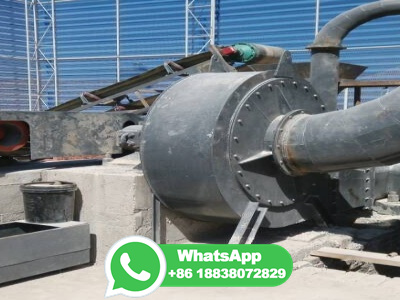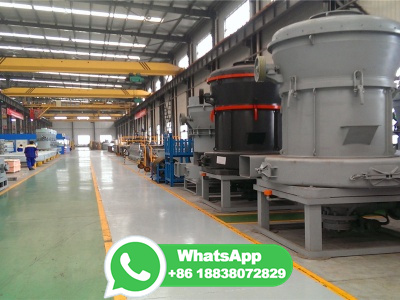
A small community, the first site of the town of Munising, sprang up around the furnace. The furnace first went into blast on June 28, 1867, and within a year was producing up to twenty tons of pig iron each day. The smelting process relied on a variety of resources and transportation networks to produce the finished product. Iron ore was mined ...
WhatsApp: +86 18037808511
iron processing, use of a smelting process to turn the ore into a form from which products can be fashioned. Included in this article also is a discussion of the mining of iron and of its preparation for smelting. Iron (Fe) is a relatively dense metal with a silvery white appearance and distinctive magnetic properties.
WhatsApp: +86 18037808511
The slag produced at blast furnace during pig iron manufacturing is called blast furnace slag. The slag produced at steel melting shop is known as steel slag. Slag output obtained during pig iron and steel production is variable and depends mainly on composition of raw materials and type of furnace. Typically, for ore feed containing 60 to 65% ...
WhatsApp: +86 18037808511
As the blast passes through the burning fuel it takes from the oxide of iron its oxygen, passing out as carbonic oxide, and thus compels it to yield up the whole of the metal iron. The iron, as it melts in the furnace, combines with the carbon of the fuel, and becomes cast iron. Although the process involved in refining purifies the iron to a ...
WhatsApp: +86 18037808511
2 Raw Materials. Impure iron is produced from reduction of iron ore by means of coke in a blast furnace. The product is a liquid iron, known as hot metal (% C, % Si, % Mn, etc.) which is raw material for production of steel. Hot metal is refined by oxidation process to form steel.
WhatsApp: +86 18037808511
melted iron production, called pig iron, as the output of process while keeping the materials on the opera ting band using hot blast [11]. The process generates enormous heat transfers and huge
WhatsApp: +86 18037808511
Mauritania's top export is iron ore, which is shipped to China and other markets where it's converted to "pig iron" and later refined into steel in blast furnaces using coking coal. Those ...
WhatsApp: +86 18037808511
From an operational perspective, pig iron appears to be a more favorable choice as an OBM source in electric steelmaking. Currently, pig iron is mainly produced through the blast furnace route. Blast furnace operation and its ancillary processes contribute the largest amount of CO 2 per ton of steel production, due to use of coal and coke.
WhatsApp: +86 18037808511
Under the background of "carbon peaking" and "carbon neutralization", the green transformation of iron and steel enterprises is imminent. The hydrogenrich smelting technology of blast furnaces is very important for reducing energy consumption and CO2 emission in ironmaking systems, and it is one of the important directions of green and lowcarbon development of iron and steel enterprises.
WhatsApp: +86 18037808511
During direct reduction in a reactor, the iron ore reacts with hydrogen at a high temperature. This hydrogen acts as a reducing agent and removes the iron oxide from the iron ore. What remains is the raw pig iron. "By using electricity from renewable energy sources, the production of hydrogen is completely free of CO 2 emissions. This means ...
WhatsApp: +86 18037808511
Blast furnace ironmaking is a continuous metallurgical process in which iron ore is reduced to liquid pig iron in a blast furnace. It is developed and improved from the ancient shaft furnace ironmaking. In China, the blast furnace is named for its vertical tubular shape and slender furnace body.
WhatsApp: +86 18037808511
In the blast furnace, the iron ore reacts with the carbon contained in the coke to form grey or white pig iron. Combustion process The iron in the processed ores must be dissolved out by chemical processes. This requires an element that binds oxygen more strongly than iron. This is exactly what carbon can do as a reducing agent.
WhatsApp: +86 18037808511
Air is blown into the furnace through tuyeres, watercooled nozzles made of copper and mounted at the top of the hearth close to its junction with the bosh. A short vertical section called the bosh parallel, or the barrel, connects the bosh to the truncated upright cone that is the stack.
WhatsApp: +86 18037808511
Unlike in the production of blastfurnace pig iron, iron ore remains solid throughout the DRIproduction process, which makes it difficult to remove impurities (Exhibit 2). As a result, the quality of the DRI is closely related to the quality of iron ore inputs. DRI is, therefore, mostly made from very highquality raw materials, which can be ...
WhatsApp: +86 18037808511
Modern steel mills and directreduction iron plants transfer the molten iron to a ladle for immediate use in the steel making furnaces or cast it into pigs on a pigcasting machine for reuse or resale. Modern pig casting machines produce stick pigs, which break into smaller 410 kg piglets at discharge. References
WhatsApp: +86 18037808511
Pig iron is produced by smelting or iron ore in blast furnaces or by smelting ilmenite in electric furnaces . Pig iron is supplied in a variety of ingot sizes and weights, ranging from 3 kg up to more than 50 kg. The vast majority of pig iron is produced and consumed within integrated steel mill complexes. In this context the term "pig iron ...
WhatsApp: +86 18037808511
Blast furnace ironmaking technology, by far the most important ironmaking process, is based on coke and iron ore pellets (or sinter) to produce liquid iron. However, there has been a worldwide effort searching for a more economical and environmental friendly alternative process for the production of liquid iron.
WhatsApp: +86 18037808511
The production of iron from its ore involves an oxidationreduction reaction carried out in a blast furnace. Iron ore is usually a mixture of iron and vast quantities of impurities such as sand and clay referred to as gangue. The iron found in iron ores are found in the form of iron oxides. As a result of these impurities, iron must be first ...
WhatsApp: +86 18037808511
the integrated steelmaking process featuring the blast furnace/basic oxygen furnace (BF/BOF), where iron ore is the major source of iron units; and; electric steelmaking based on the electric arc furnace (EAF), where steel scrap or direct reduced iron (DRI) are the major iron feedstock materials. Figure 1: major steelmaking process routes.
WhatsApp: +86 18037808511
The high alumina content in the iron ore poses a major challenge in blast furnace operation. To maintain appropriate slag viscosity, plants practice the addition of quartz and correspondingly the addition of lime to take care of basicity . This results in a significant increase in the slag rate for Indian blast furnaces (375420 kg/ton of hot ...
WhatsApp: +86 18037808511
The production process of pig iron is formed by processing iron ore, while crude steel and ferroalloy are formed by processing pig iron. The backend products of the iron and steel industry chain are complex, with a wide range of products and complex types. ... Blast furnace ironmaking: : 10 5 kJ: 2019 China Energy Statistics Yearbook ...
WhatsApp: +86 18037808511![[PDF] Reduction of Iron Ore Pellets, Sinter, and Lump Ore under ...](/s0j6hgr/305.jpg)
A blast furnace (BF) is the dominant process for making iron in the world. The BF is charged with metallurgical coke and iron burden materials including iron ore pellets, sinter, and lump ore. While descending in the BF the charge materials reduce. The iron‐bearing materials should reduce fast and remain in the solid form until as high a temperature as possible to ensure reaction contact ...
WhatsApp: +86 18037808511
Blast Furnace (BF) Smelting Process. The technological process of producing nickel pig iron (NPI) by smelting laterite ore in blast furnace is basically the same as that of modern BF smelting for producing pig iron from iron ores, as shown in Fig. Initially, the laterite ore is crushed, mixed with flux and fuel, and then sintered ...
WhatsApp: +86 18037808511
The blast furnace uses coke, iron ore and limestone to produce pig iron. Coal traditionally has been a key part of the cokemaking process. The coal is crushed and ground into a powder and then charged into an oven where it is heated to approximately 1800°F in the absence of oxygen.
WhatsApp: +86 18037808511
Blast furnacebasic oxygen furnace (BFBOF): This is the dominant steel production route in the iron and steel industry, involving the reduction of iron ore to pig iron in the blast furnace. BFBOF operation relies almost entirely on coal products, emitting ∼70% of CO 2 in the integrated plant (BF iron making). Hot iron is then charged to a ...
WhatsApp: +86 18037808511
Iron and steel mills comprise integrated producers and minimills. Integrated steel producers generally begin the process by reducing iron ore to molten pig iron in a blast furnace, although some buy slabs and coke on the open market to reduce costs. The pig iron is then combined with scrap in a basic oxygen furnace to make molten steel.
WhatsApp: +86 18037808511
Further, solid pig iron is used as "pure" raw material and carbon source in EAFs. The blast furnaceBOF route produces almost 66% total crude steel, and EAF route accounts for about 31%, while the blast furnaceopen hearth process, which dominated steelmaking in the first half of the 1900s, had only a share of about 3% left [7].
WhatsApp: +86 18037808511